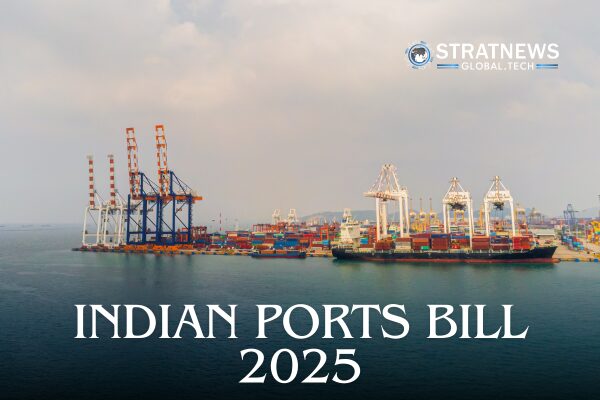The Indian Ports Bill 2025, passed by the Lok Sabha on August 12, is not just a governance reform for the maritime sector — it is also a major opportunity for technology adoption, digital infrastructure, and maritime innovation.
By mandating data sharing, electronic systems integration, and compliance with global digital standards, the Bill positions Indian ports for a tech-driven transformation.
At the core of the legislation is the statutory establishment of the Maritime State Development Council (MSDC), which will coordinate integrated, long-term port planning across both major and non-major ports. For the tech sector, the key development is that all ports will now be required to share real-time operational data — including cargo volumes, vessel traffic, capacity, hinterland connectivity, and traffic patterns — into a unified framework. This opens up demand for advanced data analytics platforms, digital dashboards, and predictive logistics tools.
The Bill brings India into alignment with the International Maritime Organization’s Convention on Facilitation of International Maritime Traffic by mandating the adoption of a Maritime Single Window system. This platform will enable ships and port authorities to submit and process all required documentation electronically through a single-entry point. By integrating port-related data into the national Port Community System, the reform reduces administrative delays and creates scope for blockchain-enabled trade documentation, AI-powered customs clearance, and other emerging technologies.
Operational safety provisions are also tech-heavy. The Bill requires ports to maintain vessel traffic services in compliance with the Convention on the International Regulations for Preventing Collisions at Sea, 1972. This creates a need for advanced maritime navigation systems, radar networks, and AI-assisted vessel tracking. Emergency preparedness and disaster response plans — also mandated in the Bill — are likely to drive investment in IoT-based monitoring systems, remote incident response tools, and secure communication platforms.
Environmental compliance is another technology driver. The legislation incorporates the MARPOL Convention and the Ballast Water Management Convention into domestic requirements, meaning ports must develop waste reception and handling plans and install adequate facilities. This will stimulate demand for environmental engineering solutions, automated waste processing systems, and water treatment technologies tailored to maritime operations.
For tech firms specializing in automation, logistics optimization, environmental monitoring, and maritime cyber security, the Bill represents a new market opportunity. By embedding these digital and compliance requirements into law, the government is effectively creating an environment where port competitiveness will depend on technology adoption.
In the long run, the Indian Ports Bill 2025’s emphasis on data-driven planning, digital integration, and global compliance could help position India as a technologically advanced maritime hub, integrating its ports seamlessly into international trade and logistics networks.


